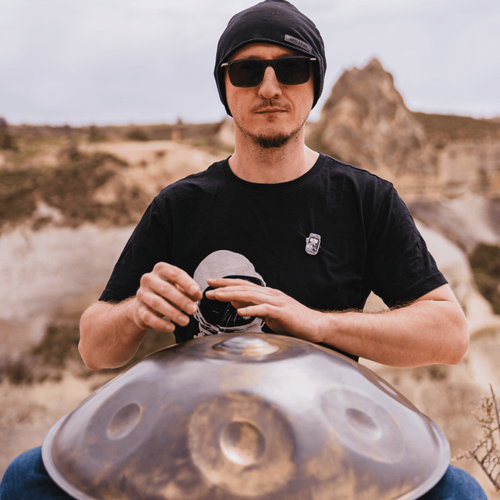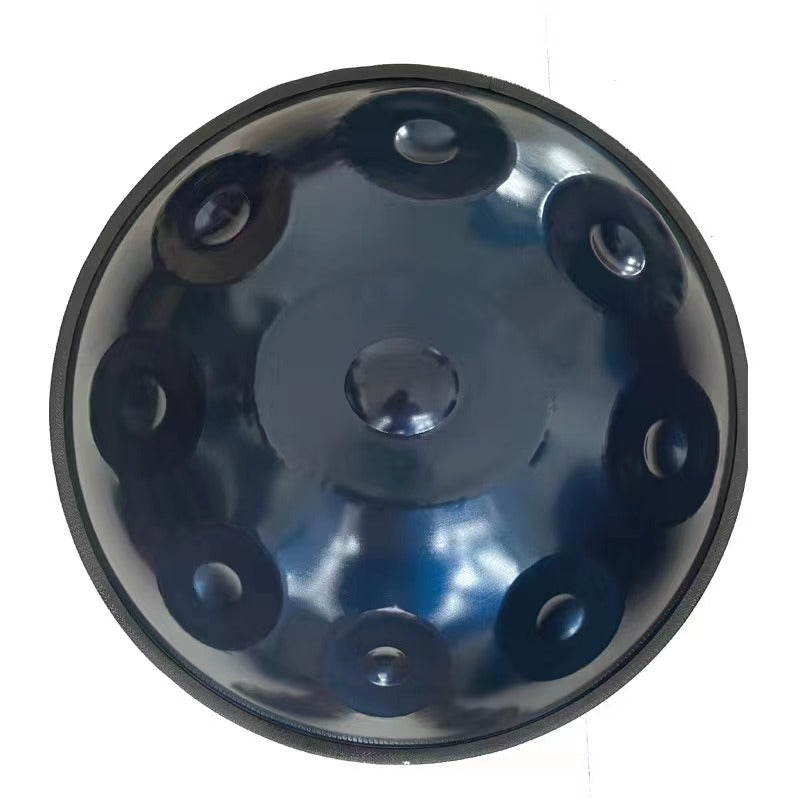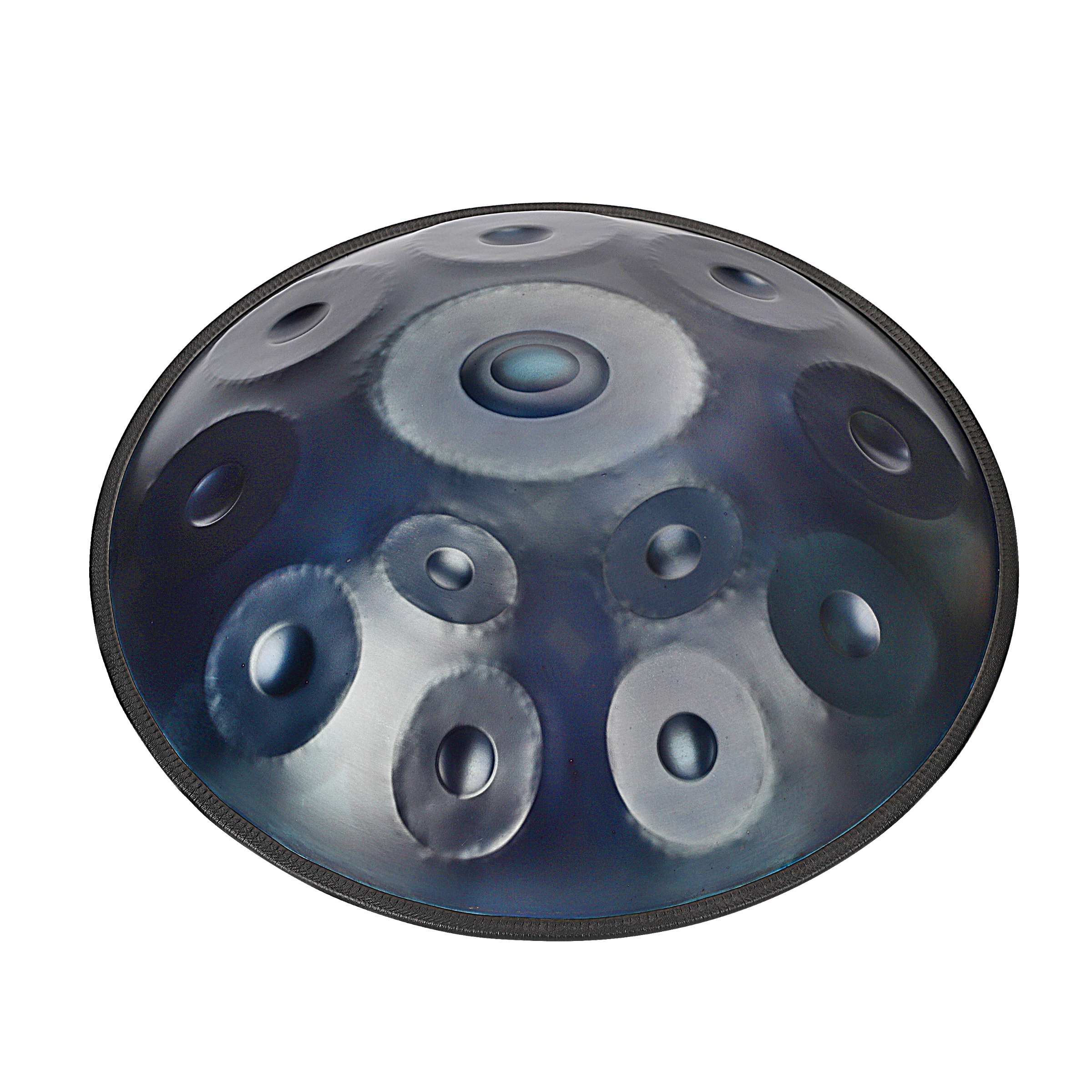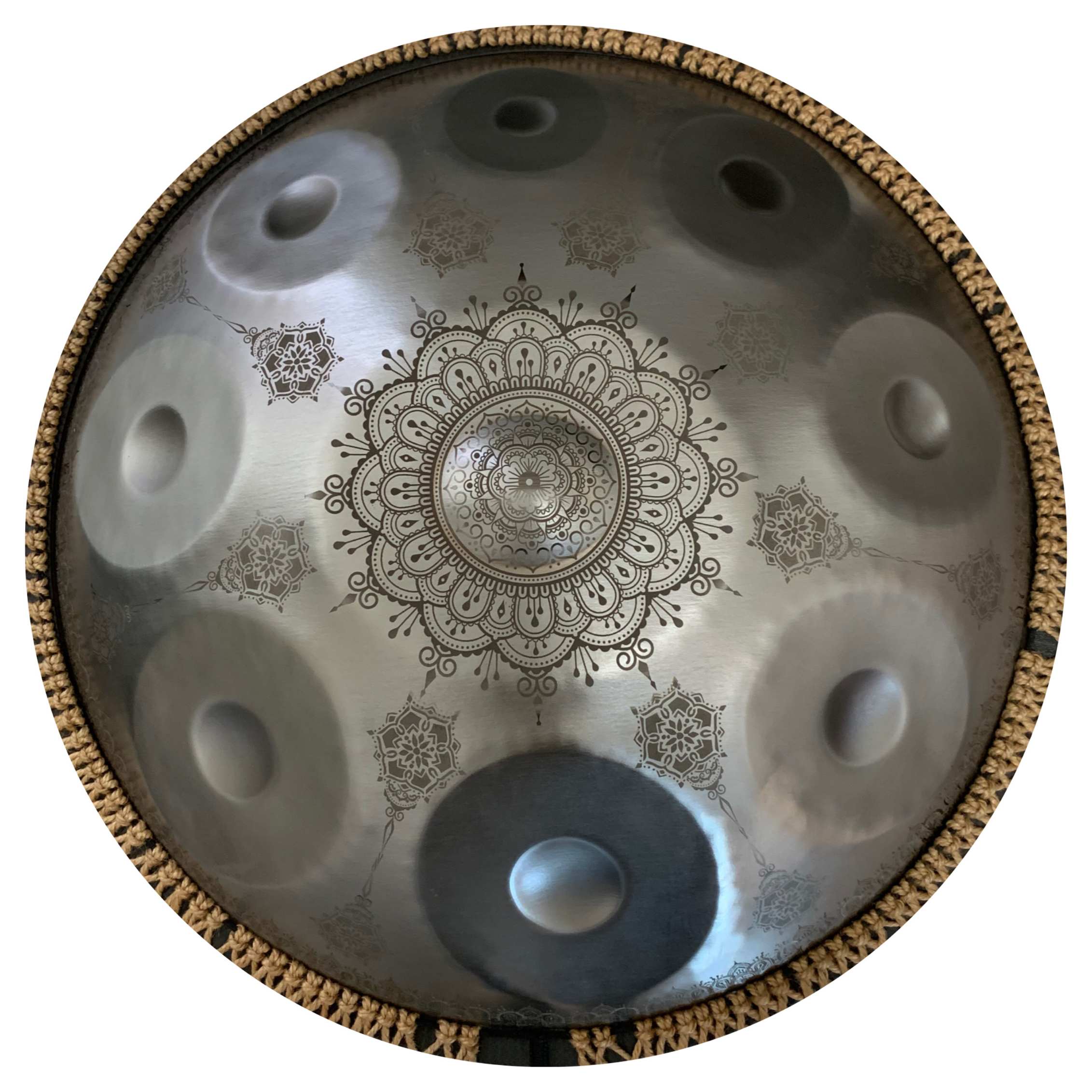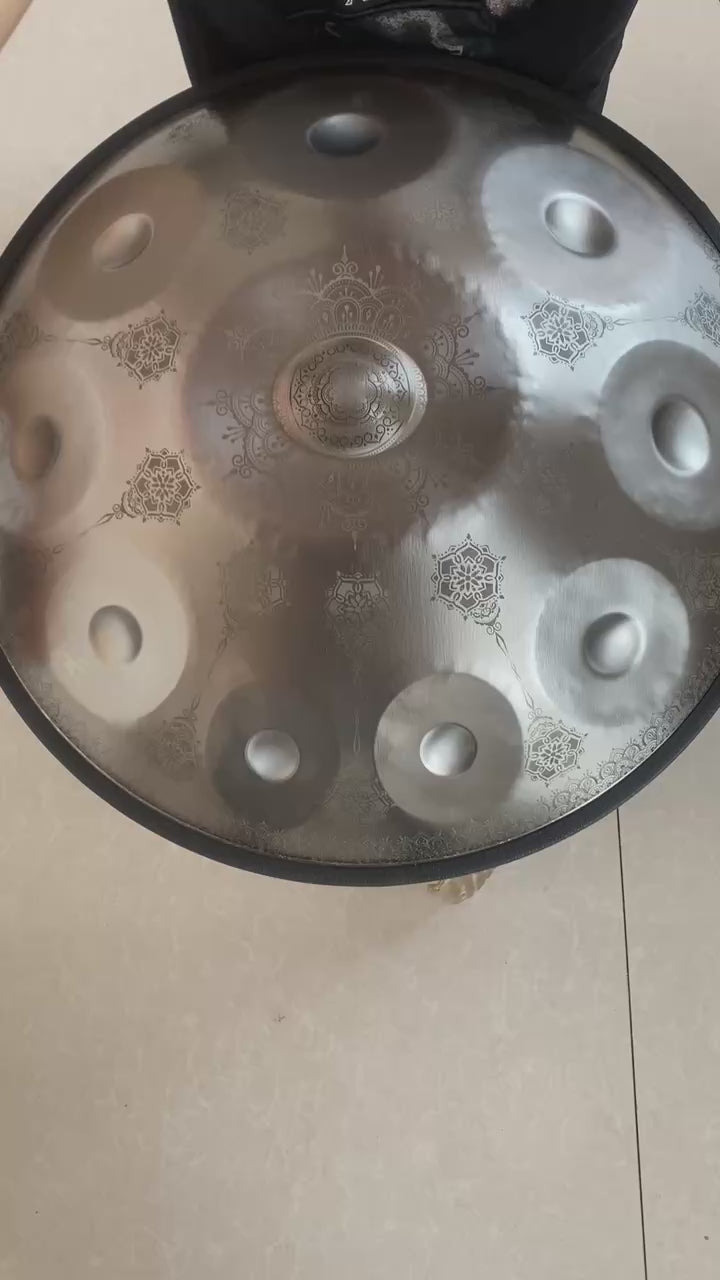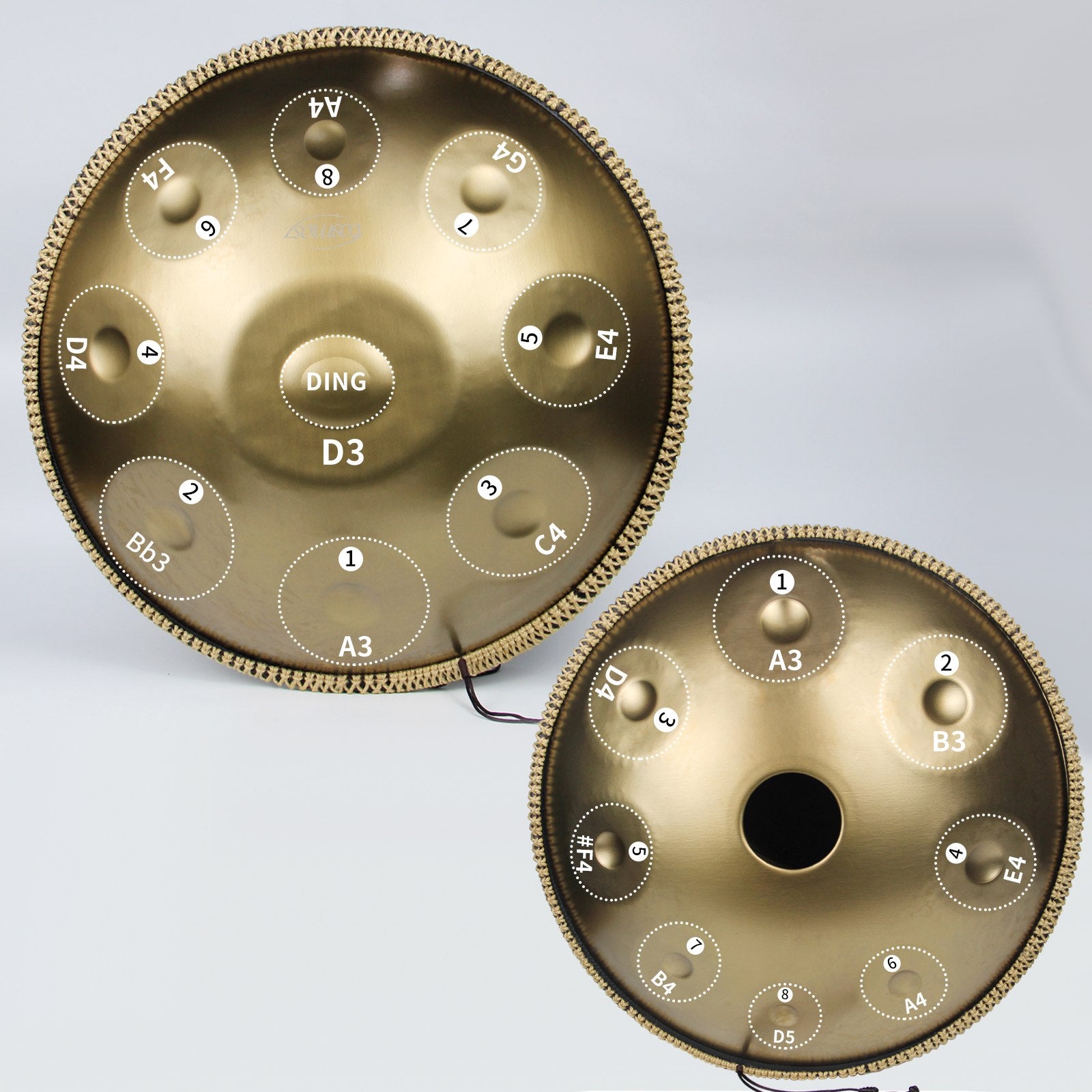
Le hang drum est un instrument fascinant connu pour ses paysages sonores éthérés et la résonance émotionnelle qu'il apporte à la musique. Bien que l'instrument soit la pièce maîtresse, vous pouvez élever votre expérience de jeu à un niveau supérieur et atteindre une qualité sonore professionnelle avec les bons accessoires. Nous savons que rassembler le bon équipement de handpan prend du temps et est fastidieux. Vous voulez juste commencer à jouer ! Alors, nous avons rassemblé tous les détails essentiels dans cet article. Tout ce que vous devez savoir est ici ! Ce guide discutera de tous les accessoires essentiels pour handpan : étuis, supports et microphones, pour vous aider à prendre les meilleures décisions.
Étuis pour handpan
Les handpans sont délicats et nécessitent une protection robuste lors du transport et du stockage. Un bon étui non seulement protège l'instrument mais garantit également sa longévité. Voici quelques types d'étuis pour handpan :
1. Étuis souples
Les housses souples, également connues sous le nom de gig bags, sont légères et portables. Elles sont parfaites pour les musiciens qui voyagent fréquemment sur de courtes distances. Recherchez des intérieurs rembourrés, des poignées durables et des sangles réglables pour un transport confortable. Certaines marques populaires incluent même des poches supplémentaires pour des accessoires comme des maillets et des chiffons de nettoyage.
2. Cas difficiles
Pour une protection maximale, les coques rigides sont indispensables. Construites à partir de matériaux comme le plastique ABS ou la fibre de verre, ces coques sont conçues pour résister à des impacts significatifs. Elles sont idéales pour les voyages longue distance, en particulier lors des vols. De nombreuses coques rigides sont équipées d'un rembourrage en mousse qui garantit un ajustement parfait pour le handpan, le protégeant des rayures et des bosses.
3. Étuis hybrides
Les coques hybrides sont une combinaison de coques souples et rigides, offrant ainsi un équilibre entre protection et portabilité. Elles présentent souvent un cadre léger avec des côtés renforcés et des intérieurs rembourrés.
Supports pour handpan
Les supports pour Hang offrent stabilité et positionnement optimal lorsque vous jouez de l'instrument. Explorons les différents types de supports disponibles :
1. Supports pour trépieds
Les trépieds sont populaires pour leur stabilité et leur ajustabilité. Ils comportent généralement trois pieds et des réglages de hauteur ajustables. Cela vous permet de personnaliser la configuration en fonction de votre style de jeu. Vous pouvez utiliser ces supports pour des performances assises et debout.
2. Supports pour genoux
Les supports de genoux sont destinés aux musiciens qui préfèrent jouer assis car ils offrent une plateforme solide. Ces supports sont légers et portables, idéaux pour des sessions de jam et de pratique décontractées. Ils élèvent légèrement le handpan au-dessus de vos genoux, garantissant un angle de jeu confortable.
3. Supports au sol
Les supports de sol sont conçus pour des configurations stationnaires. Ils sont plus encombrants mais offrent une stabilité supérieure, ce qui les rend parfaits pour une utilisation en studio ou lors de performances en direct. Certains supports de sol disposent de caractéristiques telles que des pieds en caoutchouc antidérapants et des angles réglables pour un confort accru.
Micros
Un handpan est un instrument de percussion mélodique qui produit une variété d'échelles, parfois s'étendant jusqu'à deux octaves. Voici les différents types de microphones que vous pouvez essayer.
1. Microphones à condensateur
Les microphones à condensateur sont connus pour leur sensibilité et leur capacité à capturer des sons détaillés. Ils sont idéaux pour les enregistrements en studio où la précision est essentielle. Une paire stéréo appariée de microphones à condensateur à petite membrane peut capturer magnifiquement les harmoniques et les overtones du handpan.
Pour la meilleure expérience, essayez cette configuration : placez deux petits microphones à condensateur à diaphragme de chaque côté du handpan. Vous pouvez également placer un micro de grosse caisse (micro dynamique) sous le trou gu pour renforcer les basses. Il est conseillé de placer les microphones entre 40 et 50 cm de l'instrument. Cela réduira les bruits de claquement sur les notes. Il est crucial de positionner les deux microphones à condensateur à la même distance du handpan. Cela éliminera toute différence de phase et garantira un son bien équilibré.
2. Microphones dynamiques
Les microphones dynamiques sont robustes et polyvalents, ce qui en fait un excellent choix pour les performances en direct. Ils sont moins sensibles au bruit ambiant, garantissant un son clair même dans des environnements bruyants. Les modèles avec des diagrammes polaires cardioïdes fonctionnent bien pour isoler le son du handpan.
3. Microphones de contact
Les microphones de contact, ou capteurs piézoélectriques, sont montés directement sur le handpan. Ils capturent les vibrations de la surface de l'instrument, offrant une perspective unique de son son.
Les micros de contact sont particulièrement connus pour leur capacité à capturer des performances en direct de hang drum ; lorsqu'ils sont combinés avec un percussionniste et un système de mixage capable d'appliquer des effets et des réverbérations pour vous, c'est la fête ! Les microphones de contact se présentent sous différentes formes, y compris des microphones de contact simples ou doubles et ceux fixés au bord du handpan. Pour une expérience plus complète, vous pouvez les combiner avec un petit condensateur monté. Les micros de contact peuvent être montés sur la coque inférieure ou dans l'espace entre les notes.
4. Configuration du préamplificateur
Avec vos microphones, vous aurez également besoin d'un préamplificateur. Nous vous conseillons d'en avoir toujours un à portée de main. Pour éviter les interférences d'autres instruments de musique plus forts, assurez-vous qu'il y a suffisamment d'espace entre vos microphones et tout autre instrument que vous pourriez jouer, comme un violon ou un didgeridoo. Jouez votre handpan aussi fort que vous le pouvez avant de commencer votre session d'enregistrement, et assurez-vous qu'aucun bruit n'est coupé en vérifiant le retour. Assurez-vous que votre jeu le plus fort est toujours 3 dB en dessous du son le plus fort que votre système peut enregistrer en ajustant vos gains. La qualité tonale unique d'un handpan nécessite un microphone capable de capturer avec précision son son. Que ce soit pour enregistrer en studio ou pour une performance en direct, le bon microphone peut faire toute la différence.
Accessoires supplémentaires
1. Housses pour handpan
Les housses de protection pour instruments protègent l'instrument de la poussière et des rayures lorsqu'il n'est pas utilisé. Elles sont généralement fabriquées à partir de tissus doux et sont disponibles en différentes tailles.
2. Kits de nettoyage
Maintenir la finition de votre handpan est crucial pour sa durabilité et son apparence. Les kits de nettoyage comprennent généralement des chiffons en microfibre et des solutions de nettoyage spécialement conçues pour les handpans.
3. Accordeurs
Les accordeurs de handpan vous aident à vérifier et à maintenir l'accord de votre instrument. Ils sont essentiels pour garantir la meilleure qualité sonore au fil du temps.
4. Amplificateurs
Pour les performances en direct, les amplificateurs peuvent renforcer le son de votre handpan, garantissant qu'il atteigne le public. Recherchez des amplificateurs conçus pour les instruments acoustiques pour de meilleurs résultats.
Conseils pour choisir les bons accessoires
● Établissez un budget : Déterminez combien vous allez dépenser et priorisez les accessoires en conséquence.
● Lire les avis : Vérifiez les avis et les évaluations des utilisateurs pour évaluer la qualité et la fiabilité du produit.
● Demandez l’avis d’un expert : Consultez des joueurs de handpan expérimentés ou des détaillants pour des recommandations.
● Essayez avant d'acheter : Chaque fois que possible, testez les accessoires pour vous assurer qu'ils répondent à vos besoins.
Conclusion
Investir dans des accessoires de qualité peut considérablement améliorer votre handpan. Peu importe votre niveau de jeu, les bons étuis, supports et microphones peuvent faire une grande différence. Avec les bons outils, votre handpan sonnera mieux et restera en parfait état pendant des années.

